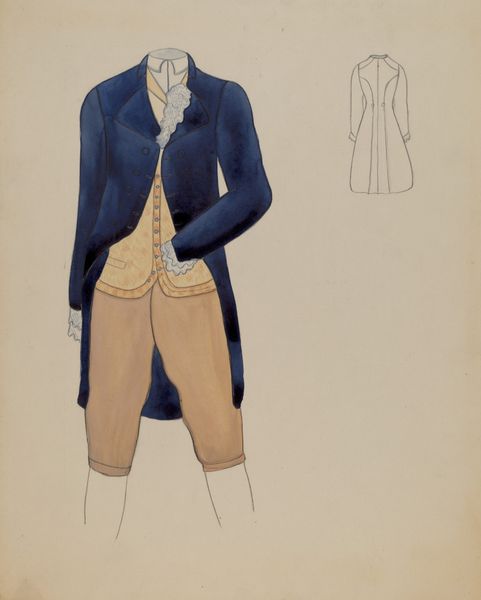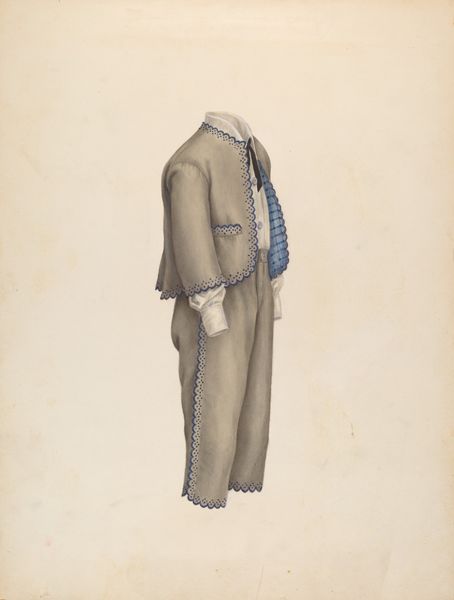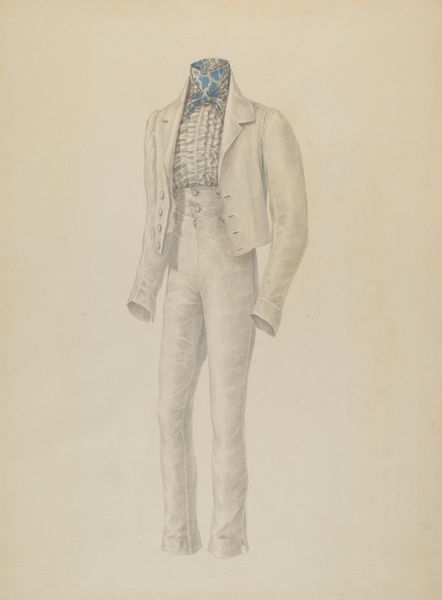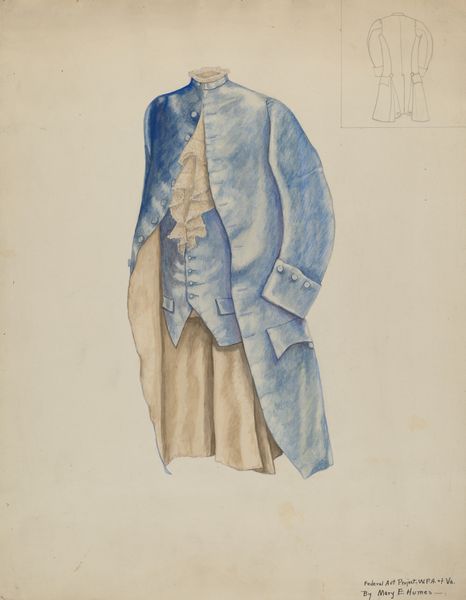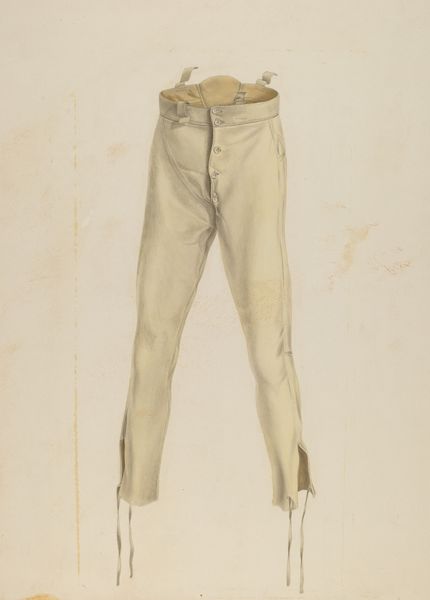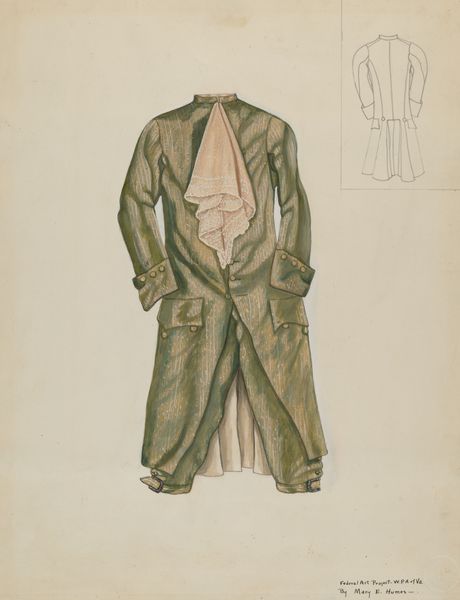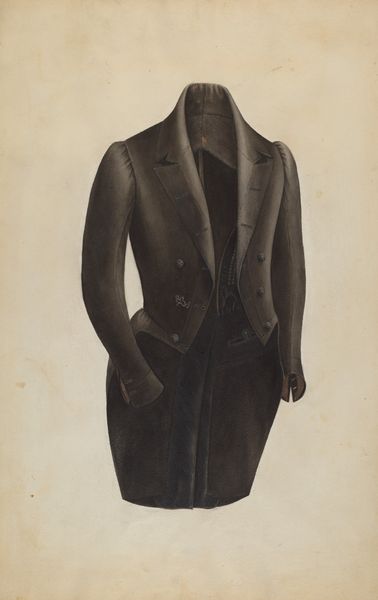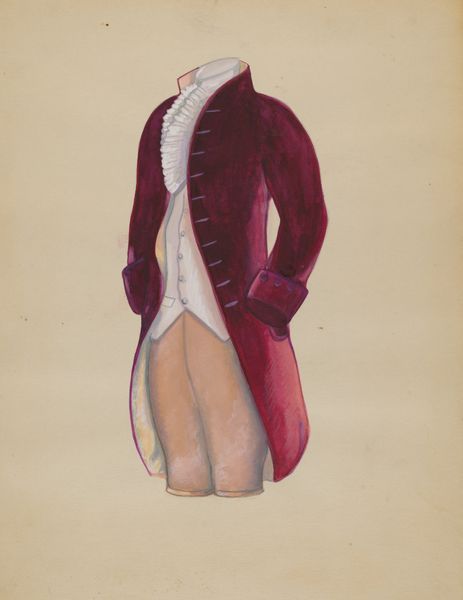
drawing, paper
#
drawing
#
paper
Dimensions: overall: 29 x 22.9 cm (11 7/16 x 9 in.)
Copyright: National Gallery of Art: CC0 1.0
Curator: Welcome. Today, we’re exploring Charles Criswell's "Suit," a drawing on paper created sometime between 1935 and 1942. Editor: It strikes me as eerily devoid of presence. The suit itself is quite elegant, a regal blue with intricate details, but the emptiness where the person should be is unsettling. Curator: The visual absence you perceive is integral to understanding its symbolism. The disembodied suit references a social structure—perhaps the constraints and expectations it imposes on the wearer. It reflects notions of power and privilege tied to historical class divisions. Editor: Interesting. I see it more as an exploration of pure form, regardless of broader sociopolitical themes. Criswell's precise lines, and the considered interplay of blues and creams, direct the eye across the figure. The texture in the fabric and lace ruffles are well observed and realistically rendered. It’s primarily about the formal elements. Curator: But can we really divorce those formal choices from their historical context? The style of dress itself is deeply embedded in history—the legacy of colonialism and exploitation inherent in the ruling class. I would argue the "presence" missing from the suit represents all the individuals whose histories were suppressed in its construction and display. Editor: I understand your interpretation, but isn't it possible to simply admire the artist’s technical skill, the composition's balanced asymmetry, the skillful tonal gradations suggesting the weight of the garments, and other such elements, in themselves, without necessarily assigning some deep metaphorical or theoretical meaning? Curator: Meaning, as I see it, is emergent and always connected. The stark background emphasizes the artifice, the constructedness, not just of the suit but the identity it signifies. I believe this is what opens it up to deeper exploration beyond purely aesthetic contemplation. Editor: Perhaps we meet somewhere in the middle, then. Criswell may be investigating the inherent beauty in objects but may also expose a certain constructed cultural and social hierarchy reflected by sartorial selection. Thank you for this unique dialogue about attire and desire.
Comments
No comments
Be the first to comment and join the conversation on the ultimate creative platform.


